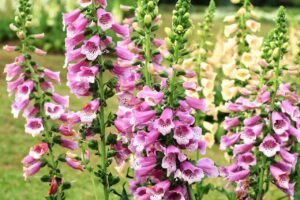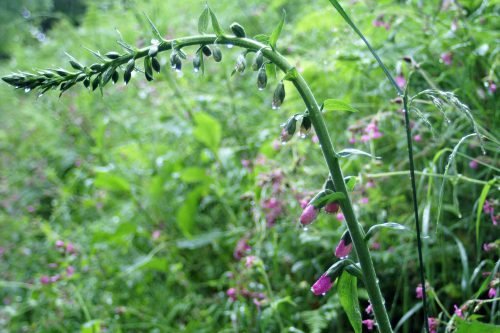Introduction to Foxglove Gumshoe
The term foxglove gumshoe refers to a remarkable concept that has intrigued both naturalists and poets alike. Originating in the folklore of various cultures, it embodies a blend of beauty and mystique found in the natural world. The name itself draws inspiration from the foxglove plant, known scientifically as Digitalis, which is renowned for its striking appearance and medicinal properties. A gumshoe, in colloquial terms, signifies a detective, often associated with the uncovering of secrets and mysteries. Together, the phrase evokes the idea of uncovering hidden truths in nature.
What makes the foxglove gumshoe particularly captivating is its unique role within diverse ecosystems. This particular entity thrives in temperate climates, often occupying woodlands, meadows, and garden landscapes. The foxglove plant, with its tubular flowers and rich coloration, can attract a myriad of pollinators, thereby playing a vital role in maintaining ecological balance. Its tall spikes adorned with purple blossoms create a striking visual contrast against greenery, enhancing the aesthetic appeal of its surroundings.
In addition to its ecological significance, the foxglove gumshoe holds substantial cultural and historical relevance. It has appeared in various works of folklore and literature, symbolizing healing, intuition, and the spirit of nature. Its poetic connections can be traced in the verses of renowned poets who found inspiration within the delicate beauty of the foxglove. This intriguing term encapsulates a rich tapestry of nature and artistry, inviting individuals to explore the seamless interplay between the natural world and human creativity.
The Ecology and Biology of Foxglove Gumshoe
The foxglove gumshoe (Pseudomyrmex foxglove) is a captivating species that showcases the intricate relationship between flora and fauna. Biologically classified within the genus Pseudomyrmex, this plant is primarily found in the tropical regions of Central and South America. The growth patterns of the foxglove gumshoe are intricately linked to its habitat, as it thrives in moist, well-drained soils often found in tropical forests or shaded areas. This adaptability to specific ecological niches emphasizes the plant’s significance within its environment.
Central to the ecology of the foxglove gumshoe is its interaction with various plant and animal species. The plant often serves as a habitat and food source for numerous insects, including pollinators like bees and butterflies, which play a crucial role in the plant’s reproductive cycle. Additionally, the relationships it establishes with native fauna contribute to the overall health of the ecosystem. The presence of foxglove gumshoe can enhance the biodiversity of its surroundings by promoting a habitat that supports numerous trophic levels.
In terms of physiological traits, the foxglove gumshoe has evolved mechanisms to adapt to diverse ecological conditions. Its root system is designed to access nutrients efficiently, while its leaves are structured to maximize photosynthesis in varying light conditions. These characteristics not only enable the plant to flourish but also highlight its importance as an integral component of its ecosystem. Furthermore, conservation efforts aimed at preserving the foxglove gumshoe are significant due to its declining habitats, driven by deforestation and climate change. Awareness and initiatives focused on protecting this unique species are essential for maintaining the ecological balance and integrity of its available ecosystems.

Cultural Significance and Uses of Foxglove Gumshoe
Foxglove gumshoe, scientifically known as Digitalis purpurea, has held a significant place across various cultures for centuries. This plant, appreciated for its striking appearance, has been intertwined with folklore, traditional medicine, and artistic expressions. In many European societies, foxglove was believed to possess mystical properties, often associated with enchantment and protection. The shape of its flowers was thought to resemble the gloves worn by fairies, adding to its allure in folklore.
Historically, foxglove gumshoe has been utilized in traditional herbal remedies for a range of ailments. Its leaves contain compounds that have therapeutic effects, leading to its incorporation into various medicinal practices. In ancient times, healers used the plant to treat conditions such as heart issues and epilepsy, though its potency requires careful dosing, underscoring the duality of its nature as both a transformative healer and a potential poison. This dichotomy makes foxglove a symbol of both life and death in traditional stories.
The symbolism of foxglove extends into modern literature and visual arts, where it often represents mystery and duality. Artists have depicted the plant in various forms, utilizing its vivid hues and unique structure to convey deeper meanings. In contemporary settings, the cultural significance of foxglove gumshoe is occasionally overshadowed by misconceptions regarding its safety and uses. Popular media may romanticize or misrepresent its qualities, leading to a disconnect between historical understanding and current teachings.
Nevertheless, the plant’s impact remains profound. Modern herbalists and practitioners of alternative medicine continue to explore the benefits of foxglove gumshoe, advocating for a balanced understanding of its capabilities. This exploration not only celebrates its heritage but also emphasizes the importance of informed usage amidst enduring fascination with this enigmatic botanical wonder.
Conservation and Future Perspectives for Foxglove Gumshoe
The conservation status of the foxglove gumshoe is increasingly precarious, due largely to environmental shifts and anthropogenic pressures. As a unique species, it is threatened by habitat loss, climate change, and invasive species, which pose substantial risks to its survival. Conservationists emphasize the crucial importance of protecting natural habitats to mitigate these threats. Without focused efforts, the delicate balance of ecosystems where the foxglove gumshoe thrives could be disrupted, leading to irreversible consequences.
Ongoing conservation initiatives aim to raise awareness about this rare plant and its critical role in biodiversity. Organizations dedicated to plant conservation are implementing strategies to monitor populations of the foxglove gumshoe, restore native habitats, and combat the spread of invasive plants. These efforts are essential in fostering resilience against the challenges posed by changing environmental conditions. It is also vital to incorporate community engagement in these initiatives, fostering a collective commitment to preserving local flora.
Individual actions can significantly contribute to the protection of the foxglove gumshoe. Advocacy for sustainable agricultural practices and responsible land use can help reduce habitat destruction. Local gardening enthusiasts could promote the cultivation of native plants, including the foxglove gumshoe, to support local wildlife and enhance community awareness. Schools and educational institutions can play a pivotal role by integrating environmental education into their curricula, helping cultivate the next generation of environmental stewards.
Ultimately, the future of the foxglove gumshoe lies in our collective hands. By understanding the importance of biodiversity and adopting sustainable practices, we can create a supportive environment for this remarkable plant. The time to act is now, as the continued existence of the foxglove gumshoe depends upon our commitment to environmental stewardship and the promotion of awareness about its unique ecological value.






